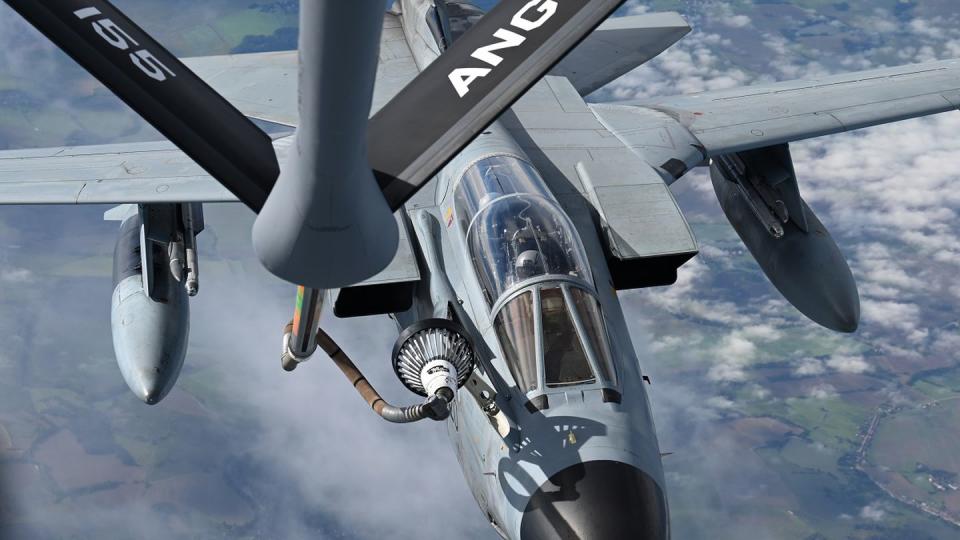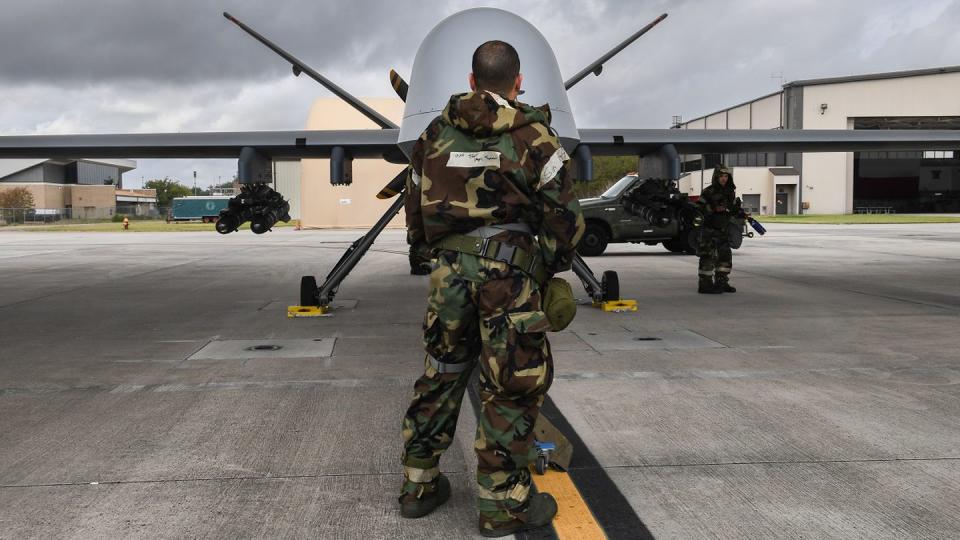Largest air exercise in NATO history to include hundreds of Guardsmen
JOINT BASE ANDREWS, Md. — NATO countries this summer will launch the largest military air exercise in the transatlantic alliance’s 74-year history, spanning more than 220 aircraft and 10,000 participants from 24 nations.
Exercise Air Defender, slated for June 12-23, aims to project a united front in Europe as Russia’s yearlong war in Ukraine slides toward stalemate.
Around half of those assets will belong to the U.S. Air National Guard, which is dispatching units from 46 wings across the country, an unusual show of force for the part-time component.
US to send Ukraine another $2.6 billion in military aid
The trip marks the Air Guard’s biggest transatlantic deployment since the Gulf War, ANG boss Lt. Gen. Michael Loh said at a media briefing here Wednesday.
“This is now putting the alliance together quickly, with a credible force, to make sure that if Russia ever lines up on the NATO border, that we’re ready to go,” he said. “We’re going to defend every inch.”
Air Defender — the German-led aviation counterpart to the U.S. Army’s annual Defender Europe exercise — has been in the works since 2018.
There’s no set scenario that pits NATO forces against a particular foe, Loh said. But the event will broadly offer Guard units the chance to gain valuable experience in the region and to work hand-in-hand with their European counterparts, Loh said.
“You have to start with the basics,” he said. “The first will be defensive counter-air. The second one will be more focused on close air support and ground attack. The third one will be offensive counter-air.”
Read more Military Times coverage of the war in Ukraine
Participating assets include the U.S. Air Force’s A-10C attack plane; F-15C, F-16 and F-35A fighter jets; MQ-9 reconnaissance and attack drones; C-17 and C-130H cargo aircraft; and KC-46 and KC-135 tankers. They’ll be joined by U.S. Navy F/A-18 fighters, NATO E-3 airborne target tracking jets, German A400 tankers, and about a dozen other types of aircraft.

Finland, which officially joined NATO on Tuesday, will take part as well. Ukraine is not involved in the event, Loh said.
Troops will begin arriving in Europe on May 29, nearly two weeks before Air Defender officially begins. Allies plan to stage operations from Iceland to Romania, with most flights taking place over three regions of Germany and the North Sea. They’ll also practice quick-turn missions to remote airfields in Eastern Europe.
Airmen will face simulated surface-to-air missiles, electronic communication jammers and other replicas of real threats. Some could be told to work through their options after sustaining battle damage.
One challenge for airmen: ensuring that ground crews can take care of any type of aircraft, anywhere in NATO, if weather, damage or an attack diverts it from its route.
The US Air Force sent F-35s to defend NATO. Here's what it learned
“One of the air bases doesn’t actually have … enough fuel, if you actually had to load up all the tankers out of there. So, how do we expand [refueling]?” Loh said. “How do we get fuel out of aircraft into bladders on the ground, so that we can refuel other things?”
Mobility bases may be asked to receive fighter jets and return them to the fight. European maintainers would be tasked to fix American aircraft. Foreign joint terminal attack controllers — the name for ground troops who direct aircraft to their targets in the field — would get the chance to call in A-10C Thunderbolt II attack planes and MQ-9 Reaper drones.
Introducing aircraft like this can show the international force what capabilities every platform has to offer, and it let’s airmen learn from each other. It’s also a trial run in case NATO becomes embroiled in a war.
“We don’t want the first time A-10s check in … with German JTACs to be when Russian tanks are crossing into NATO,” said Capt. Adam Casey, an A-10 pilot in the Michigan Air National Guard.
The exercise will also help troubleshoot more forward-looking ideas, like using the KC-46 Pegasus tanker as a communications node to pass information between faraway jets.
US hosts enlisted leadership course for Ukrainian airmen in Germany
Airmen said the deployment will provide the chance for the Air National Guard to think bigger and more critically than it has in the past, or in the repetitive practice of their daily routines.
“This kind of experience is something that we don’t have the opportunity to do on a regular basis, especially with our NATO partners,” said Lt. Col. Adam Uhan, a KC-135 Stratotanker pilot with the Wisconsin Air National Guard. “We’re getting out of our comfort zone, and this is the kind of experience that we can take back … to the younger generation.”
It’s a ripe opportunity to smooth out the logistics of shipping cargo and setting up bases in a conflict that could span millions of square miles, Uhan told Air Force Times. Mobility crews have to piece together the puzzle of who is best equipped to deliver materiel in a timely manner, and how to most efficiently keep hundreds of aircraft fueled up across several different countries.

Others like Maj. Karl McGarvey, an MQ-9 pilot with the Texas Air National Guard, look forward to reconnecting with the European service members whom American guardsmen advise under the State Partnership Program.
Czech troops will handle launching and recovering the MQ-9 while McGarvey sits at the controls, he said.
NATO fortifies eastern Europe's defenses under new 'air shielding' mission
A successful exercise can pave the way for other large-scale air deployments in Europe as the security situation on NATO’s eastern flank evolves.
“With Air Defender, we send a clear signal that we absolutely guarantee the security of the alliance, without ifs or buts,” the German air force said. “The war in Ukraine determines our present and shapes our future.”
Lt. Gen. Ingo Gerhartz, the German air force’s top officer, says the aircraft speak for themselves.
“We won’t write [Russia] a letter,” he said. “I think they get the message.”

